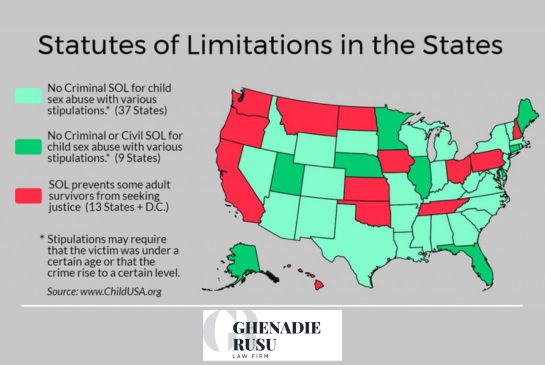Immigration court proceedings can be complex and overwhelming, especially when facing removal from a country. However, presenting a strong defense in immigration court is crucial for those seeking to remain in the country. In this article, we will guide you through the process of presenting a removal defense case, step by step, ensuring you have a comprehensive understanding of how to navigate the immigration court system.
I. Introduction To Removal Defense Case
Before delving into the specifics of presenting a removal defense case, let’s first provide an overview of what these cases entail. Removal defense cases occur when an individual is facing potential deportation from a country due to various reasons, such as visa violations, criminal activities, or failure to meet immigration requirements.
II. Understanding the Immigration Court Process
To effectively present a removal defense case, it is essential to have a clear understanding of the immigration court process. The immigration court serves as the legal venue where removal proceedings take place. It operates under the Department of Justice’s Executive Office for Immigration Review (EOIR).
A strong defense is crucial in immigration court as the burden of proof lies with the individual facing removal. It is essential to present compelling evidence and arguments to convince the immigration judge to grant relief.
III. Gathering Evidence for Removal Defense
One of the key aspects of building a solid defense is gathering evidence that supports your case. This includes both personal documents and identification, such as passports, birth certificates, and immigration records. These documents help establish your identity and immigration history.
Additionally, obtaining supporting evidence such as employment records, financial documents, medical records, or affidavits from family, friends, or community members can help demonstrate your positive contributions to society, good moral character, and strong ties to the country.
In certain cases, expert witnesses, such as immigration attorneys, forensic experts, or country condition specialists, can provide professional opinions and testimonies that support your defense strategy.
IV. Building a Strong Legal Strategy
Developing a strong legal strategy is vital when presenting a removal defense case. To start, it is crucial to understand the grounds for removal that the government is alleging. This could be based on criminal convictions, visa violations, or other immigration-related violations.
Identifying possible defenses is the next step. Common defenses include proving eligibility for relief, challenging the government’s evidence, demonstrating exceptional circumstances, or arguing against the constitutionality of certain immigration laws.
Analyzing case precedents and studying relevant immigration laws and regulations can help you build a persuasive legal argument. By examining how similar cases were decided in the past, you can develop a strategy that aligns with legal precedents and favorable outcomes.
V. Preparing for the Immigration Court Hearing
When preparing for an immigration court hearing, it is highly recommended to work closely with an experienced immigration attorney. An attorney can provide valuable guidance, ensure compliance with the legal requirements, and help strengthen your defense.
Organizing and reviewing all the gathered evidence is crucial. Make sure you have all the necessary documents properly labeled and organized to present them effectively during the hearing. Familiarize yourself with the evidence and be prepared to explain its relevance and significance to your case.
Practicing your testimony and cross-examination is essential for a successful defense. Work with your attorney to craft clear and concise answers to potential questions that may arise during the hearing. Practice maintaining a calm and confident demeanor while providing truthful and accurate information.
VI. Presenting the Removal Defense Case
During the actual immigration court hearing, you will have the opportunity to present your defense. The following steps will guide you through the process:
A. Opening Statement
Start by delivering a persuasive opening statement that outlines the key elements of your defense. This statement should capture the attention of the judge and set the tone for the rest of your case.
B. Examination and Cross-Examination of Witnesses
Present witnesses who can support your defense strategy, such as family members, employers, or experts. Your attorney will conduct direct examination to elicit favorable testimony that strengthens your case. The government may also call witnesses, and during cross-examination, you or your attorney can question these witnesses to challenge their credibility or undermine their testimony.
C. Presenting Evidence and Exhibits
Submit your evidence and exhibits to the immigration judge in a clear and organized manner. These may include documents, photographs, videos, or any other relevant materials that support your defense. Explain the purpose and significance of each exhibit to ensure their proper consideration.
D. Closing Argument
In your closing argument, summarize the key points of your defense and highlight the evidence and testimony that support your position. Emphasize the legal standards and precedents that favor your case and urge the judge to grant relief from removal.
VII. Importance of Effective Communication
Throughout the entire removal defense process, effective communication plays a crucial role. It is essential to express yourself clearly and concisely, using language that is easily understandable to the judge and other parties involved. Avoid jargon or complex legal terms that may confuse or alienate the judge.
Additionally, be mindful of the cultural backgrounds and language proficiency of those involved in the proceedings. If you require language interpretation, make sure to secure the services of a qualified interpreter who can accurately convey your words and intentions.
VIII. Conclusion
Presenting a removal defense case in immigration court can be a challenging and complex task. However, with careful preparation, gathering of evidence, and the guidance of an experienced immigration attorney, you can increase your chances of success. Remember to build a strong legal strategy, practice your testimony, and present your case with confidence and clarity.
Contact the Law Office of Ghenadie Rusu today to schedule a consultation and begin building your defense.
FAQs
Q1: What happens if I lose my removal defense case in immigration court?
If your removal defense case is unsuccessful, the immigration judge may order your removal from the country. However, you may have the option to appeal the decision to a higher court, depending on the circumstances and available legal avenues.
Q2: Can I represent myself in immigration court without an attorney?
While it is possible to represent yourself in immigration court, it is highly recommended to seek the assistance of an experienced immigration attorney. Immigration law can be complex, and having professional legal guidance can significantly increase your chances of success.
Q3: How long does the removal defense process in immigration court usually take?
The duration of the removal defense process can vary depending on several factors, such as the complexity of the case, the court’s caseload, and the availability of resources. It is advisable toconsult with your attorney to get a better understanding of the estimated timeline for your specific case.
Q4: What options do I have if I cannot afford an immigration attorney?
If you cannot afford an immigration attorney, there are organizations and resources available that provide free or low-cost legal assistance to individuals facing removal proceedings. You can reach out to nonprofit organizations, legal aid clinics, or immigration advocacy groups in your area for guidance and support.
Q5: Can I change my attorney during the removal defense process?
In certain circumstances, it is possible to change your attorney during the removal defense process. However, it is important to consider the potential impact on your case and consult with another qualified attorney before making a decision. Changing attorneys may require court approval and careful coordination to ensure a smooth transition.
Remember, each removal defense case is unique, and the information provided in this article is meant to serve as a general guide. It is crucial to consult with an immigration attorney to receive personalized advice and guidance tailored to your specific circumstances. Good luck with your removal defense case, and may you achieve a favorable outcome in immigration court.













